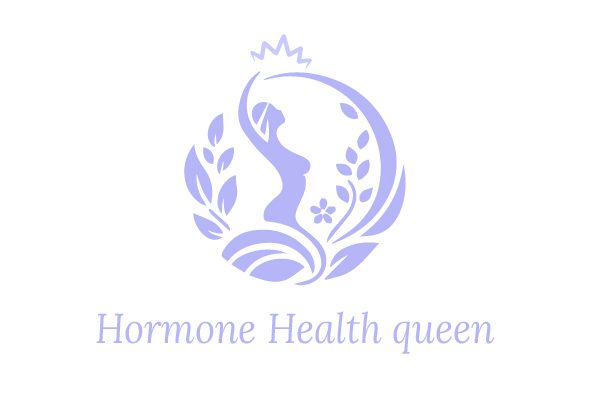Ever wondered what’s really happening inside a mom-to-be when she’s growing a whole new person? It’s fascinating stuff, let me tell you. One word: **hormones**. Yeah, not quite what you’d expect to play such a big part, right? Specifically, prenatal hormones. They’re these tiny, potent chemical messengers directing traffic and setting the stage right from the get-go. It’s like they’ve got a clipboard and walkie-talkie, coordinating a big event. But first, let’s unpack what’s happening here.
What Are Prenatal Hormones, Anyway?
Okay, prenatal hormones. Think of them as the unsung heroes of pregnancy. There’s a flurry of activity as soon as conception happens, and hormones like to be at the party early. These guys are responsible for communication between the growing baby and the mom’s body. They’re making sure that everything goes smoothly, like the foundation of a house. No foundation, no house to live in – it’s as simple as that.
- hCG (Human Chorionic Gonadotropin): The celebrity of hormones because it’s the one those pregnancy tests look for. Its main gig is to keep the pregnancy going in the early days. And sometimes it’s also behind the morning sickness, so thanks for that.
- Progesterone: The comfort blanket, really. It keeps the uterus all nice and soft for the baby to snuggle into, prevents contractions (because no one wants an early eviction notice for the little tenant), and helps the immune system chill out so it doesn’t send the whole party crashing.
- Estrogen: You can’t mention progesterone without estrogen, its dynamic duo partner. Estrogen helps in growing and developing the placenta and stimulates all kinds of organ developments in the baby. Plus, it also helps prep the mom’s body to eventually produce milk. (‘Cause when the guest’s grown, you’re gonna have a hungry housemate!)
The Wild Hormonal Ride: Trimesters Unfolded
Every trimester brings a new wave in this orchestration of life. Each phase’s role gets unique and is marked by different hormonal milestones.
First Trimester: Setting the Stage

In these first few weeks, prenatal hormones are like the tireless event planners. They are responsible for ensuring everything is running smoothly. It might look like a surge in hormones leads to nausea plus extreme fatigue, which is the typical scene.
Difference notice? Here’s why…
- Bathing in hCG: This hormone sees rapid increases and is responsible for pregnancy viability. High enough levels help detect through pregnancy tests. It’s this rise that often sets off nausea.
- Progesterone Laid Back: Its levels rise too, keeping the immune system in check. High progesterone doesn’t let the uterus send those early eviction notices we mentioned before.
Second Trimester: Building and Growing
Eventually, everything swings up during the middle phase. Mom usually feels somewhat better, and growth spurts become noticeable. Hormones continue their directional impact:
- Estrogen Spark: It fires up breast tissue development and plays a significant part in increasing blood flow for the mom and baby.
- Creating the Tremendous Three: By this time, you’ve got progesterone, hCG, and estrogen all working together to set the scene for eventual childbirth. They’re influencing everything from turning food into nutrition to recognizing when it’s time for a change.
Third Trimester: Prepping for the Big Show
Here comes the final phase! Now, prenatal hormones are in nesting mode, getting everything shipshape. For starters:
- Prolactin Pumps Up: This hormone starts preparing your body to feed the baby. It gets the breast ducts all aligned for what they need to do post-birth. Cutting-edge technology, but organic and self-made. How cool is that?
- Relaxin & Cervical Game Plan: Relaxin softens everything up – joints, ligaments, you name it. It started earlier, but by now we are talking serious flexibility for labor prep.
Mood Swings and More: Your Hormonal Reality Check

It’s not just physical changes that hormones decide to play with. Mood swings confuse even the most seasoned moms. Understand that prenatal hormones top the emotional rollercoaster list. Each feeling out of sync? Could be an abundance of estrogen busting through or progesterone giving relaxation hints, turning all of this chemistry into waves you ride through pregnancy.
Small side tip: Sometimes resting it out or indulging in what makes you calm eases the mind a bit. Exercise, safe socializing, and assuring yourself can all make a world of difference.
Helping Partners Understand
Partners get trapped in this vast hormonal sea without as much support sometimes! Remember, they don’t have your hormone experience to guide them internally, but they can support the best just by listening. Share updates, even if you don’t know why your feelings feel akin to surfing on marshmallows one moment, to needing all the warm comfort you can muster the next.
Communication Is Key
They’ve gotta know that changes aren’t choices – tell them how certain smells get you moody all of a sudden! Sharing mental terrain lightens invisible loads. All part and parcel of this prenatal journey, friends.
Identifying Where to Look for Help
If it ever feels too much, step back and allow someone with experience (thanks, Internet or healthcare professionals) to offer options. Here’s a straightforward rule: there’s no harm in seeking guidance all through pregnancy.

When to Reach Out
Lots of us pretend to be brave, but honestly, strange or particularly concerning symptoms warrant some expert peeking in. Trust your intuition. Call the care provider if your nausea never lets up; unmanageable cramps appear, sharp pain intrudes persistently, or whatever feels remotely ‘off.’
Tips to Balance It All Out
So, besides keeping sanity when prenatal hormones dance up and down, maintaining basic strategies ensures wellness and positivity flip the switch now and again:
- Nourishment Matters: Fuel needs different focus. Salmon, nuts, green leafy celebrations are friendly picks. It’s okay; cravings get monstrous but offering compromise places healthy liveness first.
- Simple Relaxation: Try meditations or simple breathing patterns. Trust me on keeping balance with some peace-evoking method helps uptightness fade away.
- Grab some Zs: Tired never tastes good, right? Making peace with rest translates into handling surprises together with your hormones feeling easier.
- Stay Connected But Realistic: Find forums for updates. Bend expectations or ask into what you hear with the support you form around you though. Every journey is personal!
Concluding with Hormonal Harmony
Ultimately, prenatal hormones create harmony despite the chaos. From life’s inception, it remains those first vital composers mute figuring of our stories, highlighting an unseen, loving participation—one which even operates amid life society views excluded. That’s no small thing!
Take comfort; these pieces and parts you gather in emotions, bodily novelty, health management reside not forgotten but nurtured memory. Baby’s arcanship wants often remembering, flowing forward dignifyingly, every character fine-tuned through their prenatal symphonic charm surrounding growth inspiring awe. Rather mysterious and engaging those hormones move, evolving gracefully altogether.
Frequently Asked Questions
What are the benefits of using a hair mask in my hair care routine?
Using a hair mask can provide several benefits, including hydration, smoothing, strengthening, curl definition, heat protection, and damage repair. Hair masks infuse the hair with moisture, help coat the hair shaft to seal split ends, reduce breakage, and protect the hair from heat styling and environmental damage[1][4].
What ingredients should I look for in a hair mask?
Effective hair masks often include ingredients such as coconut oil, argan oil, shea butter, honey, avocado oil, green tea, and coconut water. These ingredients provide nourishment, moisturize, and protect the hair, offering benefits like softening, moisturizing, and protecting against damage[2][5].
How often should I use a hair mask in my routine?
You should use a hair mask whenever your hair feels dry, unmanageable, or in need of intense hydration. This can vary depending on your hair type and needs, but generally, using a hair mask once or twice a week can help maintain healthy and moisturized hair[1][4].
How do I apply a hair mask for the best results?
To apply a hair mask effectively, shampoo your hair first, then apply the mask, focusing especially on the ends where hair tends to be the most damaged. Leave the mask on for anywhere from 10 minutes to overnight, depending on the type of mask and your hair’s needs[1][4].
References



